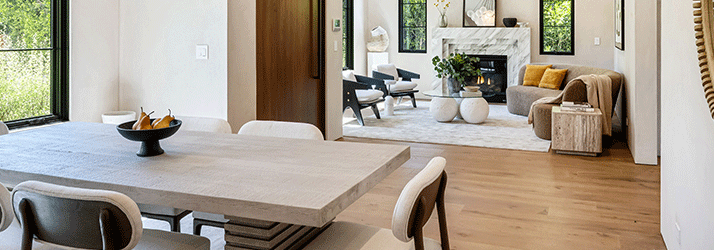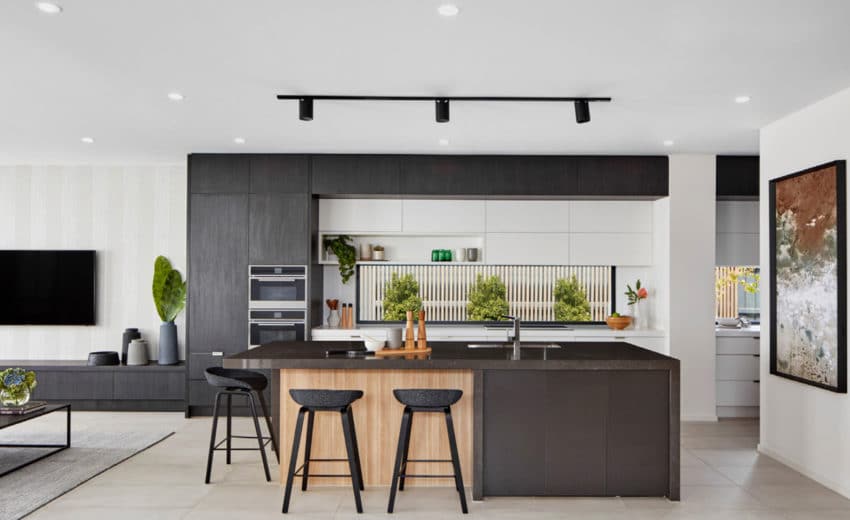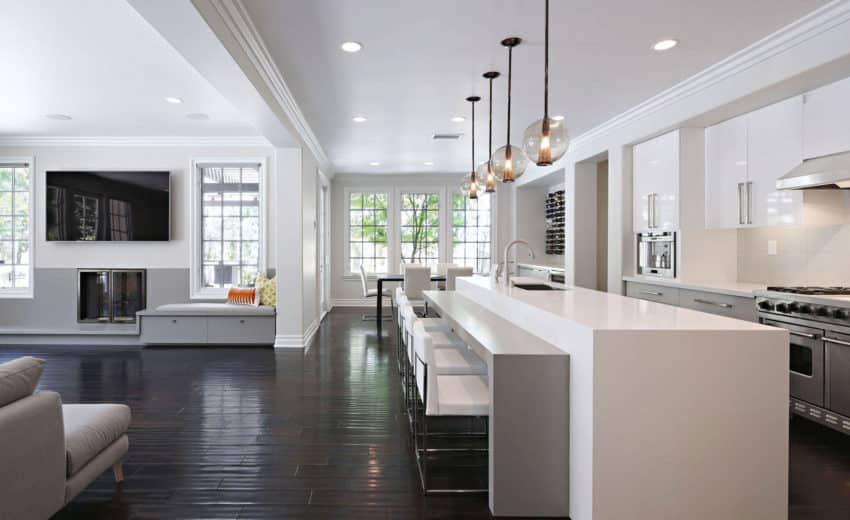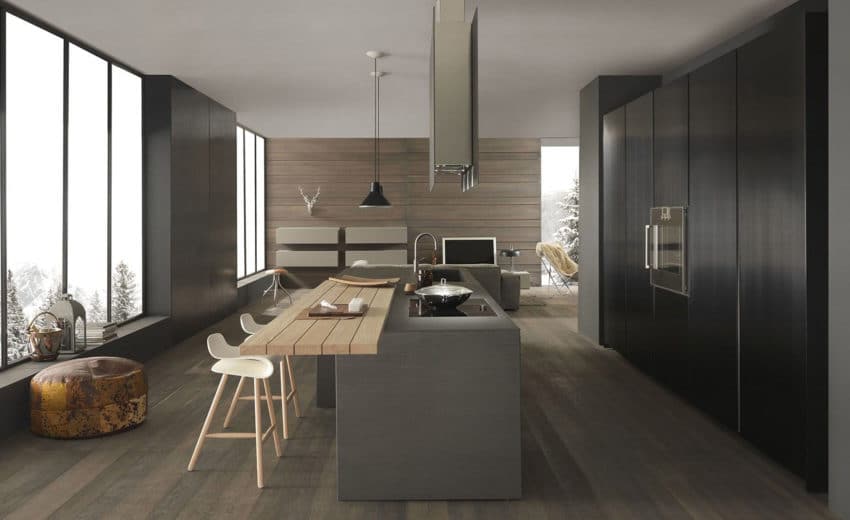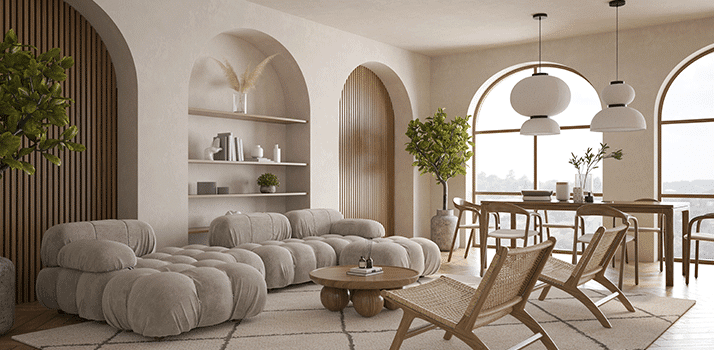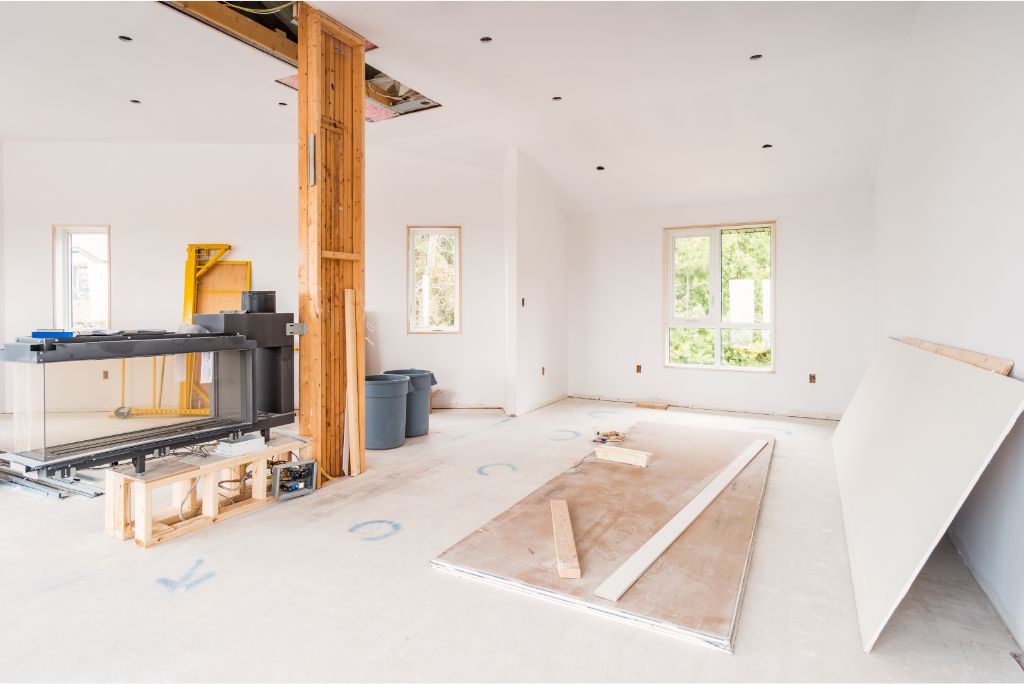
Evaluating your home’s layout often reveals opportunities to enhance both form and function; for instance, opening up a cramped kitchen into an open-plan space can increase natural light and improve flow. Incorporating modern materials like engineered hardwood or energy-efficient windows not only refreshes the aesthetic but also boosts home value by up to 15%. Projects like remodeling an entire house often involve strategic choices, such as prioritizing structural repairs before cosmetic updates. By aligning your renovation goals with practical modifications, you ensure your investment yields comfort, style, and lasting durability tailored to your lifestyle.
Key Takeaways:
- Renovating a house involves planning and prioritizing home repairs to improve functionality and aesthetics.
- AMD Construction & Remodeling specializes in transforming spaces through expert remodeling services.
- Choosing to remodel an entire house can enhance property value and create a personalized living environment.
- Effective renovation requires selecting quality materials and experienced professionals for lasting results.
- Understanding the scope and timeline of your project ensures a smooth renovation process from start to finish.
Setting the Stage: Budgeting and Planning Your Renovation
Careful budgeting and detailed planning form the backbone of any successful home repairs or remodel entire house project. Allocating funds for materials, labor, permits, and unexpected issues helps you avoid costly delays. Break down your overall budget into categories like structural updates, finishes, and appliances, while maintaining a 10-15% contingency fund. Mapping out each renovation phase, from demolition to final inspections, ensures smoother coordination with contractors and suppliers. This groundwork sets realistic expectations and enables you to control your project’s scope and quality throughout the remodel.
Calculating Costs: What to Expect
Estimating expenses can vary widely depending on your house’s size, location, and desired upgrades. On average, remodeling an entire house ranges from $100 to $200 per square foot, but high-end finishes or structural changes can elevate costs. Always factor in permit fees, design consultations, and potential surprises like outdated wiring or plumbing that require updates. For instance, replacing roofing materials alone can run $5,000 to $10,000 depending on quality. Conduct thorough research and obtain multiple contractor quotes to ground your budget in realistic figures.
Crafting a Timeline: Project Milestones
Establish a timeline based on key milestones such as design approval, demolition completion, framing and structural work, installation of utilities, and the finishing touches. A typical whole-house remodel spans 3 to 6 months but can extend depending on scope and complexity. Buffer extra time for inspections and unforeseen delays. Coordinating these project phases carefully improves workflow efficiency and helps you track progress and expenditures effectively.
Diving deeper into your renovation schedule, organize milestones with clear deadlines, like finishing demolition within two weeks or rough plumbing by week six. Break down the phases to align contractors’ availability, such as scheduling electricians immediately after framing wraps up. Using project management tools or apps can help you visualize these timelines. Consider weather impacts or local permit processing times, which might add days or weeks. Setting realistic yet structured goals keeps everyone accountable and ensures you stay on track without sacrificing quality in your remodel.
Design Decisions: Merging Aesthetics with Functionality
Balancing beauty and practicality shapes the success of your renovation. Thoughtful design choices ensure each room reflects your style while addressing daily needs. Custom cabinetry can enhance storage without overwhelming spaces, while lighting layers create atmosphere and efficiency. Prioritizing both form and function transforms your house into a home that serves your lifestyle seamlessly.
Creating Cohesive Spaces: Open Concepts vs. Defined Areas
Open plans promote flow and social interaction, perfect for entertaining or family gatherings. However, defined areas establish privacy and noise control, favorable for work or relaxation zones. Combining these approaches through partial walls or strategic furniture layouts allows you to enjoy the best of both worlds, tailoring spaces to how you want to live and move throughout your home.
Selecting Materials: Durability Meets Style
Choosing surfaces means weighing wear resistance alongside visual appeal. Quartz countertops resist scratches and stains, ideal for kitchens, while hardwood floors add warmth and endure decades of foot traffic. Incorporating materials like porcelain tile or engineered stone can elevate style without sacrificing longevity, ensuring your home repairs hold up beautifully for years.
Exploring materials beyond their look uncovers valuable benefits; for instance, bamboo flooring offers sustainability along with impressive durability, making it a smart alternative to traditional hardwood. Matte-finish ceramic tiles hide dirt better than glossier ones, reducing maintenance. Brands like Caesarstone provide engineered surfaces combining quartz hardness with sleek design variations. You’ll find that investing in high-quality, resilient materials not only enhances your remodel’s aesthetic but also minimizes long-term upkeep, supporting both your budget and lifestyle as you renovate a house.
Navigating the Red Tape: Permits and Regulations
Renovating a house involves more than design and materials—you’ll face permits and regulations that govern every phase. Local governments demand specific paperwork for home repairs and remodel entire house projects to ensure safety and compliance. Overlooking these can lead to costly delays or fines. Staying proactive by understanding your municipality’s processes allows smoother progress and timely inspections, keeping your renovation timeline intact while avoiding unexpected roadblocks.
Understanding Local Building Codes
Local building codes set standards on structural integrity, electrical systems, plumbing, and energy efficiency. These codes vary by city and county, so reviewing them early helps tailor your plans properly. For example, if your remodel involves moving load-bearing walls or updating electrical wiring, your design must align with these regulations. Accessing your city’s building department website or consulting professionals experienced with your area’s codes can save time and ensure your renovation meets all legal safety requirements.
How to Secure Necessary Approvals
Securing approvals starts with submitting detailed plans including blueprints and scope of work to the building authority. You may need multiple permits—for structural changes, electrical upgrades, or plumbing adjustments. Fees vary but typically range between $300 and $1,000 depending on project size. Inspections occur at several stages, so scheduling them in advance speeds up the process. Hiring a contractor familiar with local permitting can streamline your experience and prevent costly rework.
Beyond initial submission, you’ll want to track your permit status regularly and be prepared to provide revisions if inspectors request code compliance changes. Some locations offer online portals for application tracking and fee payment, making management more convenient. Additionally, certain historic districts or neighborhood associations might require separate approvals or design reviews. Understanding these layers upfront keeps your renovation aligned with all regulatory expectations, allowing your project to move forward without unexpected hold-ups.
The Renovation Process: From Demo to Decor
As you renovate a house, the transition from demolition to decorating unfolds in stages, each demanding your attention. Demo clears the way for structural changes or home repairs, revealing unexpected issues like outdated wiring or water damage. Following that, framing, plumbing, and electrical updates set the foundation before drywall and flooring go in. Finally, finishes such as paint, fixtures, and furnishings bring your vision to life. Planning this sequence thoughtfully avoids costly delays and ensures every detail aligns, making the entire house remodel smooth and efficient.
Managing Contractors: Tips for Effective Communication
Clear communication with contractors streamlines the remodel entire house project and safeguards your investment. Maintain regular updates through calls or texts; documenting conversations keeps expectations aligned. Clarify timelines and budgets upfront, and verify every change in writing to prevent misunderstandings. Assume that periods of silence don’t indicate progress—proactively checking in preserves momentum and accountability. Building a rapport based on transparency fosters a smoother renovation process and higher-quality results.
DIY vs. Hiring Professionals: Making the Right Choice
Assessing which tasks to handle yourself versus hiring pros depends on skill level, time commitment, and project complexity. DIY might save money on painting or simple repairs, but technical jobs like electrical or plumbing upgrades often require licensed specialists. Overestimating your capabilities can lead to costly mistakes or safety hazards. Assume that accurately evaluating your strengths and available resources upfront leads to better decisions, protecting your remodel entire house investment and overall timeline.
Expanding on this, consider practical examples—installing new kitchen cabinets might be manageable DIY for homeowners comfortable with measurements and tools, yet rewiring circuits demands certified electricians to comply with codes. Balancing cost savings against potential delays or rework guides you toward informed choices. Engage professionals for specialized work to maintain quality and warranty coverage, while reserving simpler tasks for yourself to stretch your budget effectively throughout your renovation journey.
The Unexpected: Anticipating Challenges and Setbacks
Even with meticulous planning, renovating a house often reveals hidden issues like outdated wiring, water damage, or structural weaknesses. You might uncover asbestos insulation behind walls or suspect termite damage under floorboards. These discoveries can disrupt your schedule and inflate your budget, but building flexibility into your timeline and finances keeps your project on track. Prepare for delays by setting aside at least 10-15% of your budget as a contingency fund. Partnering with experienced professionals helps you identify potential challenges early, allowing you to manage surprises without derailing your entire remodel.
Common Renovation Pitfalls: What to Avoid
Overlooking permits or underestimating costs are frequent stumbling blocks when you remodel an entire house. Cutting corners on inspections can lead to costly rewrites later, while opting for cheap materials sacrifices durability. Avoid rushing decisions about layout changes or finishes, and don’t ignore underlying problems like mold or foundation cracks. Skimping on professional advice often results in workmanship needing repeated fixes. Your best bet is to prioritize comprehensive assessments and realistic budgeting before you invest.
Problem-Solving on the Fly: Adapting Your Plan
Unexpected issues mean adapting your remodel strategy on the spot. Suppose you discover rot beneath a bathroom floor; swapping materials or redesigning the plumbing might become necessary. Adjusting your plan often involves consulting with contractors about alternatives—switching to prefabricated components or choosing different finishes that fit the revised scope. Agile decision-making and clear communication ensure the project continues smoothly despite the detours.
When you face last-minute hurdles, effective problem-solving means balancing practicality with your renovation goals. For instance, if outdated electrical panels require replacement, upgrading circuits can provide long-term value but could push you to extend timelines. Discuss options with your construction team to weigh cost, efficiency, and aesthetics. Sometimes, temporary workarounds maintain progress until full repairs are feasible. Embracing flexibility in your approach helps keep the momentum without compromising quality or safety during your home repairs remodel entire house journey.
Final Touches: Bringing Your Vision to Life
After AMD Construction & Remodeling home repairs and a remodel of the entire house, the final touches tie your project together beautifully. Selecting the right fixtures, paint colors, and décor accents transforms sterile spaces into warm, inviting rooms that reflect your personality. Small upgrades like brushed nickel hardware, layered lighting, and custom window treatments elevate the design without vast expense. Consider enhancing curb appeal with landscaping or fresh exterior paint to complete the transformation. These layers of detail emphasize quality craftsmanship, making your renovation feel intentional rather than pieced together.
Staging Your Home: Creating Ambiance
You can boost appeal and emotional connection by staging your renovated spaces with carefully chosen furniture, rugs, and art that complement the style and layout. Soft lighting and neutral tones let potential buyers or guests envision their own lives within your home. Strategic placement of mirrors brightens rooms, while fresh flowers or greenery inject vitality. The goal is a lived-in, welcoming ambiance that showcases each room’s potential and maximizes the return on your remodel entire house investment.
Long-term Maintenance: Preserving Your Investment
Establishing a routine maintenance plan helps protect your upgraded systems, finishes, and structural elements from wear and tear. Regular inspections of roofing, plumbing, and HVAC prevent costly surprises. Sealing grout and maintaining exterior paint every few years preserves aesthetics and structural integrity. Catalog warranties, manuals, and contractor contacts in one place to streamline future repairs or upgrades. Staying proactive extends the life of your renovation and safeguards the value you’ve created.
Digging deeper into long-term maintenance, you should prioritize seasonal tasks like gutter cleaning and HVAC filter changes to maintain optimal system performance. Tracking when appliances and fixtures were installed enables efficient budgeting for eventual replacements. Engaging professionals for annual home inspections can reveal hidden issues early on, such as minor foundation cracks or drafty windows, protecting your remodel entire house investment. By addressing minor concerns proactively, you avoid expensive renovations down the line and keep your home safe, efficient, and comfortable for years to come.
FAQ About How to Renovate a House with AMD Construction & Remodeling
Q: What are the first steps to take when you decide to renovate a house?
A: When you decide to renovate a house, the initial steps include assessing the current condition of the property and identifying the scope of the project. It’s important to outline your goals, whether you’re focusing on home repairs, a remodel, or an entire house makeover.
Q: How can I determine which home repairs should be prioritized during a renovation?
A: Prioritizing home repairs depends on safety and structural integrity. Start with issues related to the foundation, roofing, plumbing, and electrical systems, as these have the greatest impact on a house’s stability and habitability.
Q: What is involved in remodeling an entire house compared to just a single room renovation?
A: Remodeling an entire house is far more comprehensive than updating a single room. It involves planning for multiple changes such as structural modifications, updating utilities, redesigning layouts, and improving energy efficiency throughout the home.
Q: How long does it typically take to renovate a house?
A: The duration of a house renovation varies significantly based on the scale of the project. Minor home repairs or single-room remodels may take several weeks, while remodeling an entire house can span several months.
Q: Can I live in my home during the renovation process?
A: Whether you can stay in your home during renovation depends on the extent of the work and your comfort level. Minor repairs or single-room updates often allow residents to remain in place. However, for extensive remodeling of an entire house, it may be safer and more practical to arrange temporary accommodations due to noise, dust, and access restrictions.
Thinking about how to renovate a house and boost its value? Discover why a well-planned renovation can transform your living space and how to get started with confidence. Start your home transformation journey today!
Also read:
Plano TX Remodeling: Transform Your Home with Expert Care
Modern Addition to Old House That Doesn’t Ruin Its Original Charm
What Should You Look for in a Fitness Studio Build-Out Contractor?

